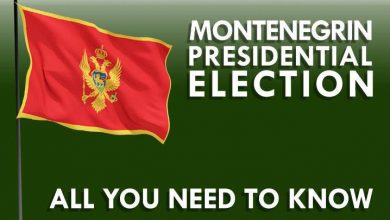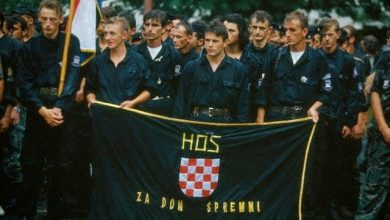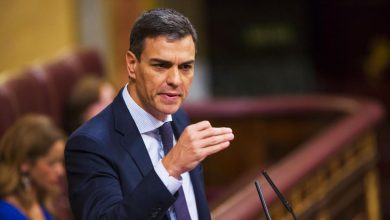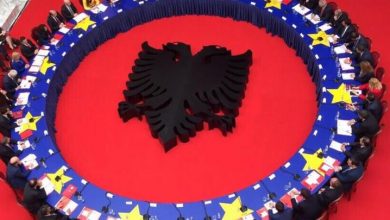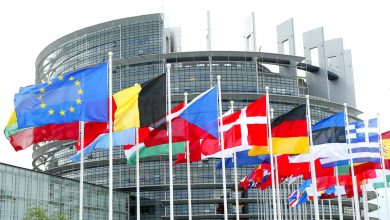The Next Enlargement Wave: Kosovo Still in Its Early Accession Stage

‘The Next Enlargement Wave’ is an article series providing information about the candidate countries for EU membership and their path ahead. In this sixth installment, we will look at Kosovo.
Since the birth of the Coal and Steel Community in 1952, the European project has grown from a meagre 6 founders to its current 28 members through six distinct enlargement waves. Now, the European Union seems to be ready for a seventh wave – this time incorporating the Western Balkans within the bloc. But how does a country go about joining the EU, exactly? It is necessary to meet determinate criteria before even being considered as a potential candidate member. For example, countries must be ‘European‘, something which has proven of difficult interpretation in the past. When Morocco applied, the EU turned it down on the basis that it was not a European country, but only a few years later Cyprus’ application was accepted – even though the island is technically in Asia. Nowadays, it is down to a purely political decision on a holistic basis.
European countries which wish to apply for membership also have to show that they fulfill the so-called Copenhagen criteria. This requires potential candidate countries to demonstrate respect of democracy and fundamental freedoms, the existence of a functioning market economy, and the intent to accept the obligations formed by EU membership. It is only once the Copenhagen criteria are fulfilled that the accession negotiations can finally begin. These negotiations involve the complicated process of adapting the candidate country’s legislation to the EU’s acquis communautaire, the corpus of legislation of the Union.
There are currently five countries which have the official status of candidate countries: Albania, Montenegro, Northern Macedonia (FYROM), Serbia, and Turkey. The European Commission moreover recognises two additional potential candidate countries, which are not ready to start negotiating yet but will probably be in the near future: Kosovo and Bosnia and Herzegovina. Each of these countries has a unique relationship with the EU, and their negotiating processes has been very different due to the different internal mechanisms. This series will attempt to track the specificities of each of them and what those means for the future of their enlargement negotiations. Today, we shall look at Kosovo’s progress.
Geography and Culture of Kosovo
Kosovo is located in the centre of the Western Balkans, in between Albania, Serbia, Northern Macedonia (FYROM) and Montenegro. It spans across 10,908 sq. km. and has a population of just over two million citizens. Not all countries have accepted its unilateral declaration of independence from Serbia back in 2008. In fact, only 116 countries recognise its existence as a sovereign nation.

Amongst European states, the ones which do not recognise the breakaway region, apart from Serbia itself, are: Spain, Greece, Bosnia and Herzegovina, Slovakia, Belarus, Cyprus, Moldova, Romania, Ukraine, and Russia. In addition, also China, India, Mexico and many African and Latin American countries have also refused to recognise it as independent.
A vast majority of the Kosovar population is made up of Gheg Albanians. The Ghegs are one of the two major ethnic sub-groups in Albania, where they mostly inhabit the mountainous north. Their presence in Kosovo means that Albanian, and specifically its Gheg variant, is spoken by 94.5% of the population. The Serbian language also holds official status at the national level, with Bosnian, Turkish, and Roma being officially recognised in some municipalities.
The country’s capital, Pristina, is a prime example of Yugoslav-era socialist architecture, unlike other major cities, like Prizren, which are dominated by Ottoman styles. Mosques and hamams are common throughout the country, and so are Orthodox monasteries. Over the past few years, Pristina has been trying to rebrand itself, and it has become an important fashion design hub for Albanian-speaking territories.
Kosovar cuisine reflects the complicated history of the region, with Albanian and Serbian dishes intermingling with Turkish desserts, such as baklava, lokum and halva. These are a staple of religious holidays like Christmas, Easter, and Ramadan. Sheep salami, called suxhuk, is another common Kosovar delicacy of Turkish origin. Kosovo’s national dish is undoubtedly flia, a baked pancake composed of multiple crepe-style layers, filled with cheese, meat and potatoes. Turkish coffee is very popular in Kosovo, although Albanian-style mountain tea and black tea are also common.
Sports play a significant role in Kosovar society, and have served as a vehicle for celebration of the breakaway region’s independence. The Olympic Committee of Kosovo became a full member of the International Olympic Committee in 2014. The national team participated at the 2015 European Games in Azerbaijan, and the 2016 Summer Olympics in Brazil, with judoka Mailinda Kelmendi winning the gold medal in judo. Football, basketball, and boxing are also popular, and Kosovo is home to several talented football players, like Lorik Cana, who played with Olympique de Marseille, Sunderland, and the Albanian national team, among others.
Society and Religion
Obtaining consistent and reliable figures on Kosovo’s ethnic composition is complicated, as several municipalities have boycotted official censuses. Nevertheless, it’s clear that Albanians make up a vast majority of the country’s population, reaching 92.9% in the official census of 2011. The Bosnian minority comes a very distant second at 1.7%, and is mostly concentrated in the south. Serbs, on the contrary, are concentrated in North Kosovo, as well as in some eastern municipalities. In the 2011 census, they accounted for 1.6% of Kosovo’s population, but North Kosovo did not participate in that census, so the number is de facto higher. Turks are approximately 1.1% of the population, and are concentrated above all in the district of Prizren).

Relations between Albanians and Serbs have always been difficult. The Serbian minority, currently concentrated in North Kosovo, as well as in the east, is represented by its own party, which has become a regular fixture in the Parliament of Kosovo. At time of writing, this party is also a member of the governing coalition. Relations between ethnic minorities also impact diplomatic relations between Kosovo and its neighbours: slights, diplomatic incidents and provocations occur often.
While many Gheg areas are Catholic, Islam is the most practiced religion in Kosovo, with 95% of the population self-identifying as Muslim. Relations between the Albanian Muslim and Catholic communities are good, whereas the Serbian Orthodox community is relatively isolated. Kosovars define their identity more along linguistic lines than religious ones. In fact, Kosovar society is firmly secular, ranking first in southern Europe and ninth worldwide for tolerance towards different faiths and atheism.
Kosovo is going through a democratic boom, with its population having grown by 460% between 1921 and 2003. This growth continues to this day: Albanians in Kosovo have the fastest growth rate of any other population in Europe. The Serbian population, on the other hand, has shrunk, especially after many Serbs relocated to neighbouring Serbia following the ethnic strife of 1999. As a result of these, and other factors, Kosovo is the youngest country in Europe. Almost half of its population is constituted by under 25.
Economic context
Given the troubled history of the region, it’s no surprise that the Kosovar economy is still in transition. War, political instability, and economic upheavals have created a negative economic environment at the turn of the millennium. Nevertheless, since the independence declaration of 2008, Kosovo’s economy has grown by an average of 5% every year. To maintain this growth, Kosovo is highly dependent on capital flowing in from abroad, typically in the form of foreign-direct-investment, or remittances from the Albanian Diaspora.
Kosovo also has a curious history when it comes to its currency. In the aftermath of the conflict with Serbia, the United Nations mandate administering Kosovo never withdrew the Yugoslav Dinar from circulation. The currency, however, was already ailing by then, and Kosovars preferred using US Dollars, Swiss Francs and German Marks as hard currency. All three were given official status in 1999, with the Mark quickly becoming the prominent currency in the region. In 2002, Kosovo adopted the Euro as its official currency. While not a member of the Eurozone, and thus minting no coin of its own, the breakaway region conducted the switch with the cooperation of the European Central Bank.
Kosovo has signed free trade agreements with Albania, North Macedonia, Bosnia and Herzegovina, and Croatia. Turkey, Italy, Germany, and Switzerland are prominent commercial partners, with the latter hosting many of the Kosovars who fled abroad during the war. The country is also part of CEFTA, a free trade area comprising non-EU European countries. The wine industry is very successful and a prime export candidate: millions of litres of wine (above all Pinot noir, Merlot and Chardonnay) are produced around Orahovac every year. Agriculture contributes almost 35% of the national GDP. Additionally, Kosovo has large reserves of zinc, silver, nickel, zinc, lead, and bauxite. It has the 3rd largest lignite reserve in Europe, the 5th largest in the world.

Tourism has grown to become one of the most prominent economic activities in Kosovo, mostly thanks to the country’s breath-taking landscapes, which have been enthusiastically described by many renowned international outlets, like The New York Times and The Guardian. In order to preserve these landscapes, however, further action is needed on sustainability, and the adoption of EU environmental standards.
The country’s young population faces considerable hardships in obtaining the skills demanded by employers, not least because of how difficult it is for Kosovar students to get visas. Due to the uncertain diplomatic status of Kosovo, these visa requests are often denied, preventing participation in internships and other programmes abroad. This negatively affects the research sector, as well as universities.
State of talks
In 2013, Kosovo and Serbia signed the Brussels Agreement, a treaty seeking to normalise their relations, allowing both countries to proceed on the path of European integration. The agreement commits both “not to block or encourage others to block the other side’s progress in the respective EU paths”. Days after the agreement was ratified, the European Commission authorised the negotiation of a Stabilisation and Association Agreement between the EU and Kosovo, as well as membership negotiations with Serbia.
The Stabilisation and Association Agreement was signed on 27 October 2015, and it was the first such agreement to be signed after the ratification of the Lisbon Treaty. Since the latter established legal personality for the whole Union, this meant that the EU could sign the agreement with Kosovo as a legal entity, without requiring ratification by each Member State. Independence is not required for such an agreement, allowing the EU to side-step the Serbian-Kosovar territorial dispute. Nevertheless, since five Member States do not recognise Kosovo, the Commission had to issue a directive saying that the agreement “will not signify that the EU or any of the countries recognise Kosovo as a state”. The agreement went into force on 1 April 2016.

The latest reports show that, for all its progress, Kosovo still needs to work on several, critical issues. While elections are generally competitive and well-administered, intimidation against candidates and journalists remains common. Even more seriously, the implementation of human rights strategies, legislation against corruption, and measures against organised crime is fatally weakened by a chronic shortage of funds, and limited support from the government. The ruling coalition has struggled to implement EU related reforms, and parliament remains rowdy, with the proceedings hampered by obstructionism and the use of tear gas.
Kosovo is moderately prepared in other areas, such as free movement, industrial policies, public procurement and the business environment. Its environmental policies, however, lag far behind EU standards, and the situation in North Kosovo represents a significant obstacle. The four Serbian-majority municipalities experience severe problems with crime and corruption, and their relationship with central authorities is frayed, although the EU has successfully fostered some institutional dialogue in recent years. Plans for a comprehensive census of the area are still under development.
In economic terms, Kosovo’s rapid growth, the government’s fiscal discipline, and the expanding business environment bode well for its chances of future accession. Nevertheless, the country is barely in the early stages of creating a functioning market economy, and significant obstacles remain: the informal economy is still widespread, there has been little progress in education, and the railways and energy sector are still held back by significant infrastructural gaps.
The Road Ahead
The future of Kosovo in the EU will depend first of all on its commitment to normalising relations with Serbia, and winning recognition by all Member States. The Brussels Agreement is an exceptional document in the long process of bringing peace to the Balkans, but it needs to be upheld through the years in order to gain legitimacy.
Serbia is not the only neighbour playing a role in Kosovo’s potential EU accession. Albania is also a factor, with some political parties on both sides of the border coveting unity and the establishment of a greater Albania. In the event of an attempted unification referendum, Kosovo could well suffer a dramatic setback in its path towards EU membership.
Aside from diplomatic and domestic considerations, border controls are also an immediate concern. Visa liberalisation is a priority to bolstering Kosovo’s education and labour market, but more pressingly, Pristina needs progress in ensuring the security of its borders, now hat numerous foreign fighters who fought for the Islamic State in Syria are making their way back to the Balkans.
There is no doubt that Kosovo’s continued engagement in the Stabilisation and Association Agreement is a good sign, and the progress made by the breakaway region is tangible. There can be no illusion, however, on the fact that Kosovo is very much in its early stages on the road to accession. Moreover, the final outcome will equally be determined by its internal development, and by its ability to find a lasting settlement with its Balkan neighbours.

